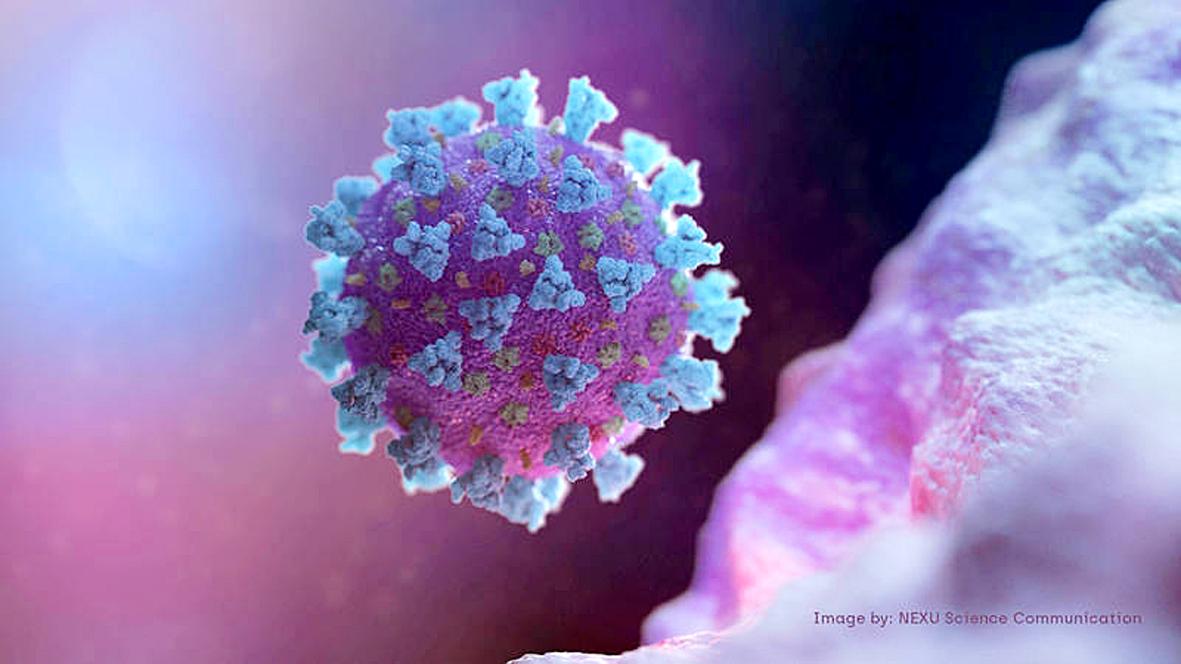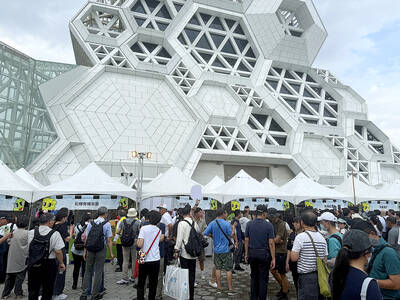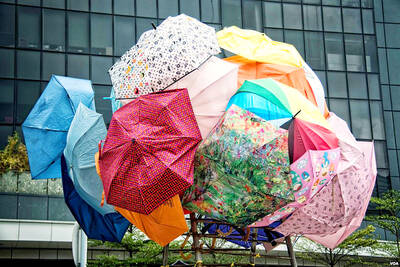The advent of the Omicron variant of COVID-19 has spawned a new genre of fantasy and science fiction in which males (invariably white) argue that it is an “opportunity” or that the government should open up and let the virus run its course. After all, Omicron is “mild,” as numerous studies are now showing, and even more so among the previously infected and/or vaccinated population.
It’s time, they argue, to accept that COVID-19 will be with us forever and re-open the country. The government must face reality, must “move from denial to acceptance” as one recent poster on LinkedIn put it. This prescription, widespread on social media, is a recipe for disaster.
A recent piece in the English-language media, for example, arguing that Omicron was an “opportunity,” came out at roughly the same time that a factory in Taoyuan had to shut down because some cleaners at the airport who became infected also worked at the factory. Nearly 400 workers at a food processing plant were also tested, same issue.

Photo courtesy of Mitake
VULNERABLE POPULATION
These connections emphasize not only the fact that Taiwan is heavily networked in ways that are not readily visible or predictable, but also the way that economic precarity and wage stagnation function to make society that much more vulnerable to the spread of new variants. There is no way someone with a critical cleaning job at the airport should be making so little that they are forced to work in a factory.
One can only imagine how many such closures would be necessary should Omicron rampage across Taiwan. Labor usage is tight, especially in the electronics sector, where foreign workers regularly work overtime shifts to cope with the “shortage” of imported labor (in reality, an unwillingness of local bosses to pay locals to fill the gap). The loss, temporary or permanent, of large numbers of workers to Omicron would be incredibly disruptive.

Photo: Reuters
People who argue that keeping the nation closed is bad for the tourism and several other sectors. They are entirely right. The alternative, however, is far worse.
But disrupted production in the critical export sector is only the beginning of the problem. As of this writing seven schools had been closed in Taoyuan. If Omicron spread widely, it is likely schools would have to close. After all, children in Taiwan are a relatively less vaccinated group, and many of them live with or are cared for by aged relatives, also a proportionately less vaccinated cohort.
Then there is health. The strident emphasis on “mild” Omicron is intended to obscure the issue of how many would be killed by this policy. “Real men,” after all, understand that omelets must result in broken eggs (for some elusive reason women seldom call for the trains to run on time over the bodies of their dead fellow beings).
The New York Times Pitchbot trenchantly satirized this view on Twitter the other day: “Thousands of Americans are dying from Omicron each week,” it observed. “The good news is that most of these deaths are mild.”
OVERWHELMED HOSPITALS
In the US and elsewhere, the “mild” Omicron wave has resulted in massive spikes in hospitalization. In recognition of this, last week the medical authorities here in Taiwan were already sending patients home in anticipation of the need for hospital beds.
The hospital system is set up on the fundamental principle that the number of hospital beds in a given region is determined by a formula based on its population. At any given time there are few slack resources in the system, which is one of the reasons medical tourism remains largely an unrealized dream.
This means that local hospitals can easily be swamped. When a cold wave hits there’s a sudden demand for medical services as people experience heart problems, as happened just last week. Slack in the system is needed for events like that. Imagine if Omicron has filled hospital beds across the island, and we have an episode similar to the water park explosion that burned so many children a few years ago, or the train accident in Hualien last year that resulted in over 250 injured. Where will the sick go?
LONG COVID
Moreover, any variant can spawn long COVID, with all its attendant problems, as the US CDC noted: “Long COVID can happen to anyone who has had COVID-19, even if their illness was mild, or if they had no initial symptoms.”
Long COVID has profound social costs. Sufferers need everything from routine treatments to double lung transplants, costs the health system will have to absorb, along with economic losses and the costs to the family of care at home.
Omicron on the loose means everyone not only gets to gamble against death, but also gets to play the long COVID lottery. Welcome to the omelet, eggs. Hope you can make your saving throw!
Can you get re-infected? Of course. Anyone really feel like playing the death and long COVID lottery twice? Three times? Me neither. But that is what we will all face if this “opportunity” is seized.
Recall that re-infection rates are orders of magnitude higher than the low numbers one sees, because many authorities will not accept another round of COVID-19 as a re-infection without genetic data showing a different version of the virus is responsible. But few labs, health systems or victims have the time and resources to meet that high bar.
I will not speak of the increased stress on health care workers, the depression, the exhaustion, suicides, the leaving of the industry and especially their high risk of infection and re-infection. After all, the Omicron-as-opportunity crowd doesn’t. For them, health care workers are just discardable resources whose existence is assumed rather than considered.
Every intelligent human can see that COVID-19 isn’t going to go away. The world isn’t going to return to the way it was, just as it didn’t after syphilis and tuberculosis and smallpox, until the advent of modern medicine.
That history suggests that it will be possible to return to some level of “normal” in the future when vaccinations are mandatory for all and medical science possesses an armory of reliable and inexpensive weapons against this disease.
That time certainly isn’t now.
Omicron, many epidemiologists have argued, is eventually going to infect all of us. That may be true, but it does not necessarily follow that we need to be infected right now, all of us at once. Keep Taiwan (Omicron) free!
Notes from Central Taiwan is a column written by long-term resident Michael Turton, who provides incisive commentary informed by three decades of living in and writing about his adoptive country. The views expressed here are his own.

Water management is one of the most powerful forces shaping modern Taiwan’s landscapes and politics. Many of Taiwan’s township and county boundaries are defined by watersheds. The current course of the mighty Jhuoshuei River (濁水溪) was largely established by Japanese embankment building during the 1918-1923 period. Taoyuan is dotted with ponds constructed by settlers from China during the Qing period. Countless local civic actions have been driven by opposition to water projects. Last week something like 2,600mm of rain fell on southern Taiwan in seven days, peaking at over 2,800mm in Duona (多納) in Kaohsiung’s Maolin District (茂林), according to

Aug. 11 to Aug. 17 Those who never heard of architect Hsiu Tse-lan (修澤蘭) must have seen her work — on the reverse of the NT$100 bill is the Yangmingshan Zhongshan Hall (陽明山中山樓). Then-president Chiang Kai-shek (蔣介石) reportedly hand-picked her for the job and gave her just 13 months to complete it in time for the centennial of Republic of China founder Sun Yat-sen’s birth on Nov. 12, 1966. Another landmark project is Garden City (花園新城) in New Taipei City’s Sindian District (新店) — Taiwan’s first mountainside planned community, which Hsiu initiated in 1968. She was involved in every stage, from selecting

The latest edition of the Japan-Taiwan Fruit Festival took place in Kaohsiung on July 26 and 27. During the weekend, the dockside in front of the iconic Music Center was full of food stalls, and a stage welcomed performers. After the French-themed festival earlier in the summer, this is another example of Kaohsiung’s efforts to make the city more international. The event was originally initiated by the Japan-Taiwan Exchange Association in 2022. The goal was “to commemorate [the association’s] 50th anniversary and further strengthen the longstanding friendship between Japan and Taiwan,” says Kaohsiung Director-General of International Affairs Chang Yen-ching (張硯卿). “The first two editions

It was Christmas Eve 2024 and 19-year-old Chloe Cheung was lying in bed at home in Leeds when she found out the Chinese authorities had put a bounty on her head. As she scrolled through Instagram looking at festive songs, a stream of messages from old school friends started coming into her phone. Look at the news, they told her. Media outlets across east Asia were reporting that Cheung, who had just finished her A-levels, had been declared a threat to national security by officials in Hong Kong. There was an offer of HK$1m (NT$3.81 million) to anyone who could assist